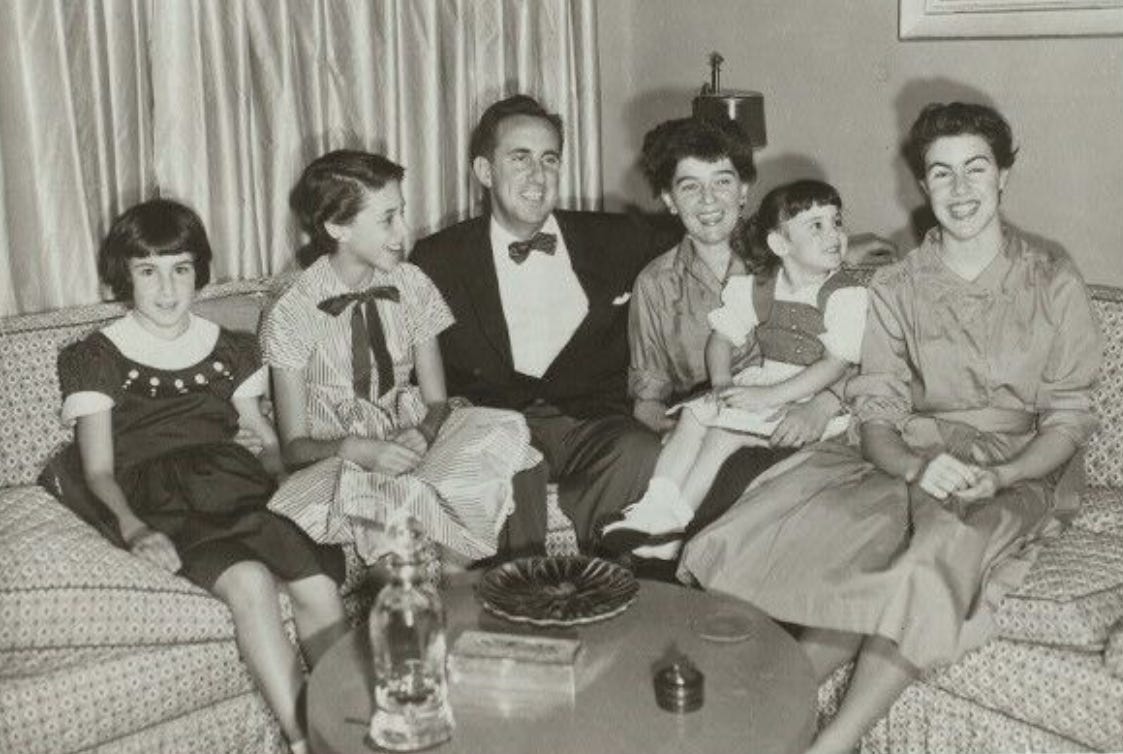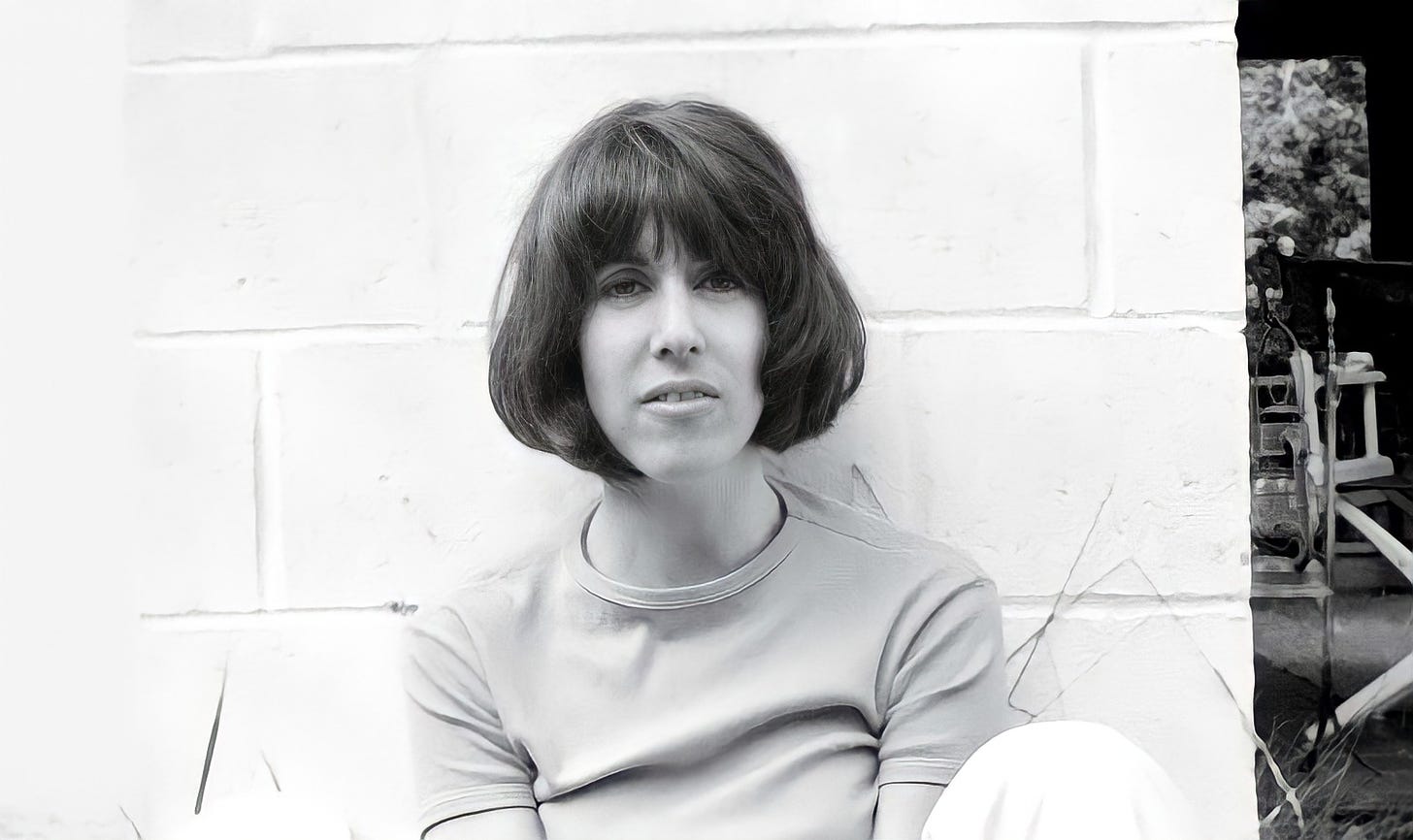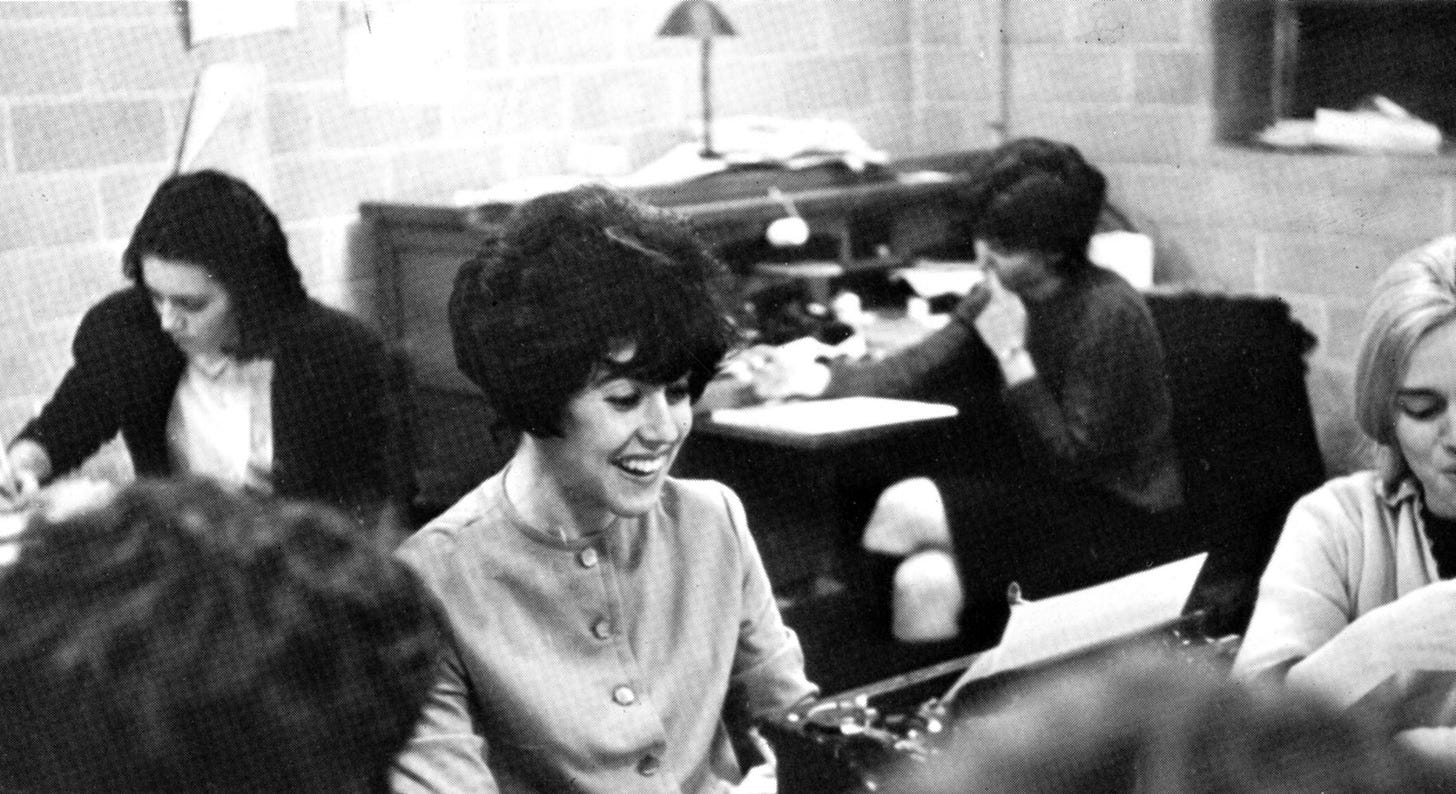Nora Ephron was born on May 19th 1941 in New York City. The first of the four Ephron daughters (next came Delia, then Hallie, and then Amy), Nora was named after Nora Helmer, the central character in Henrik Ibsen's play A Doll's House. When she was born, her parents Phoebe and Henry lived with Phoebe’s parents, Louis and Kate Wolkind, in an apartment near Riverside Park (hello You’ve Got Mail hive).
After Nora’s birth, Phoebe and Henry, the stage manager for playwriting duo Kaufman and Hart, began a writing partnership. Their collaboration began with Three’s A Family which was loosely based on their life sharing an apartment with Phoebe’s parents and a baby. In Jacob Bernstein’s documentary about his mother Nora, Everything is Copy, Amy stated “My dad had written a bunch of plays and I think Mommy got tired of his plays not selling and she said “I’ll write one with you.”…..And it was sort of a hit.” Three’s A Family opened on Broadway in 1943, and ran for over a year. In her 2017 essay for The Oprah Magazine about life as an Ephron, Hallie states that her parents were always credited as Phoebe and Henry Ephron, at her mother’s insistence.
This collaboration led to the pair becoming a screenwriting duo, earning their first credits for adapting plays for the silver screen. First contracted to Warner Brothers, Phoebe and Henry then signed a seven-year screewriting contract with Twentieth Century Fox, writing films such as There’s No Business Like Show Business, Daddy Long Legs, Carousel, and Desk Set. To be closer to the shining lights of Tinsel Town, The Ephron family which at that time consisted of Phoebe, Henry, 5 year old Nora and toddler Delia, moved to Beverley Hills. In her essay, The Story of My Life in 3,500 Words or Less, Nora describes sitting in a sunny playground surrounded by her new classmates, thinking “What am I doing here?”.

Despite spending a large part of her childhood and all of her teenage years in Beverly Hills, Nora always felt like a New Yorker at heart and longed to return. Studying Journalism at Wellesley College, and working at the Wellesley News, Nora was planning the next stage of her life as a New York journalist.
In The Story of My Life in 3,500 Words or Less, Nora recounts a trip to New York towards the end of her studies “I’m still in college, but soon I won’t be, soon I’ll be living here in New York City.” She vows that one day she will know someone in New York due to worries about “end[ing] up being one of those people you read about in newspapers, who lives in New York City and never meets anyone and eventually dies and no one even notices until days later, when the smell drifts out into the hallway.” If this line seems familiar, that’s because it appears in Nora’s iconic screenplay for When Harry Met Sally.
Harry: Why don't you tell me the story of your life.
Sally: The story of my life?
Harry: We've got eighteen hours to kill before we hit New York.
Sally: The story of my life isn't even going to get us out of Chicago, I mean nothing's happened to me yet. That's why I'm going to New York.
Harry: So something can happen to you?
Sally: Yes.
Harry: Like what?
Sally: I can go into journalism school to become a reporter.
Harry: So you can write about things that happen to other people.
Sally: That's one way to look at it.
Harry: Suppose nothing happens to you. Suppose you lived out your whole life and nothing happens, you never meet anybody, you never become anything and finally you die in one of those New York deaths which nobody notices for two weeks until the smell drifts into the hallway.
Just prior to her graduation from Wellesley College in 1962, Nora got a job at Newsweek as a mail girl (in Journalism: A Love Story she recalls that the male interviewer informed her that “Women didn’t become writers at Newsweek.” from Journalism: A Love Story). In her essay Journalism: A Love Story, Nora recounts packing up on graduation day and returning to her beloved New York “I got lost only once — I had no idea you weren’t supposed to take the George Washington Bridge to get to Manhattan. I remember being absolutely terrified when I realised that I was accidentally on the way to New Jersey and might never find a way to make a U-turn; I would drive south forever and never reach the city I’d dreamed of getting back to ever since I was five, when my parents had thoughtlessly forced me to move to California.” Nora and a friend from Wellesley rented an apartment on 110 Sullivan Street in the South Village (which had not yet become the trendy SoHo of today).
Recounting her “prosaic” tenure at Newsweek in Journalism: A Love Story, Nora outlined the gender discrimination experienced by the junior female staff at the paper “There were no mail boys at Newsweek, only mail girls. If you were a college graduate (like me) who had worked on your college newspaper (like me) and you were a girl (like me), they hired you as a mail girl. If you were a boy (unlike me) with exactly the same qualifications, they hired you as a reporter and sent you to a bureau somewhere in America.” During her time at Newsweek Nora worked as a mail girl, a clipper and then a researcher - positions which she described as the three rungs of girldom. (Side note: In 1970, years after Nora left the paper, 46 female staff sued Newsweek for gender discrimination in the first female class action lawsuit in America. See Lynn Povich’s The Good Girls Revolt: How the Women of Newsweek Sued their Bosses and Changed the Workplace, and the TV series Good Girls Revolt, executive produced by Nora’s longtime friend Lynda Obst).
Nora’s shot at finally becoming the New York journalist she’d always wanted to be came during the 114-day New York newspaper strike, beginning in the December of 1962. During the strike Nora’s friend Victor Navasky (the basis for that nut from The Observer Frank Navasky), the editor of the satirical Monocle, produced parodies of New York papers - The New York Pest and the Dally News, and asked Nora to contribute a parody of a New York Post column. On becoming aware of these spoofs, the publisher of the New York Post Dorothy Schiff stated “If they can parody the Post they can write for it. Hire them.” (Journalism: A Love Story). Nora was asked to a week long tryout at the paper, writing four bylines including an interview with actress Tippi Hedren, and an article covering a murder on West Eighty-second street. She described the paper’s city room as old, worn out and rather dirty, with not enough desks to go around, but stated that “I couldn’t have cared less. I had spent almost half my life wanting to be a newspaper reporter, and now I had a shot at it.” (Journalism: A Love Story).
At the end of the trial week she was hired, and Nora Ephron the New York journalist was born “I loved the Post. Of, course it was a zoo….but I loved my job. In my first year there, I learned how to write, which I barely knew when I began.” She was initially assigned shorter pieces, then graduated to five-part series and feature assignments covering Bobby Kennedy, and a piece on George Harrison during The Beatles first trip to the US in 1964 (The Youngest Beatle). Nora worked at the New York Post for five years and left to become a magazine writer, writing essays and columns for publications such as Esquire and New York Magazine. Part 1 of college-aged Nora’s New York wishes had come true, and a year prior to her departure from the Post the second part of her wishes - dating/and or marrying a journalist - also came true when she met and married author and humorist Dan Greenburg.
Join me in the second part of Nora Ephron: A Born New Yorker for more on her first marriage, her marriage to Carl Bernstein and her Washington DC years, her return to New York, The Apthorp and The Upper West Side, her marriage to Nicholas Pileggi, The Upper East Side, and how her love of New York is reflected in her films.
The Story of My Life in 3,500 Words or Less in I Feel Bad About My Neck - Nora Ephron, 2006
Journalism: A Love Story in I Remember Nothing and Other Reflections - Nora Ephron, 2010
Coming of Age With The Ephron Sisters — And Their Mother - Hallie Ephron, 2017
Having it All: Phoebe Ephron Gave Birth to Several Classic Films and 4 Female Screenwriters - Dr Rosanne Welch, 2022
Lynn Sherr Remembers College Friend Nora Ephron - Lynn Sherr, 2012, updated in 2017
Nora Ephron Biography - Academy of Achievement
Everything Is Copy - Jacob Bernstein, 2015, HBO
I’ll Have What She’s Having: How Nora Ephron's Three Iconic Films Saved the Romantic Comedy - Erin Carlson, 2017, Hachette Books






Love!!!
The more we read about Nora, the more we realise just how much she pulled from her own life. Great read!